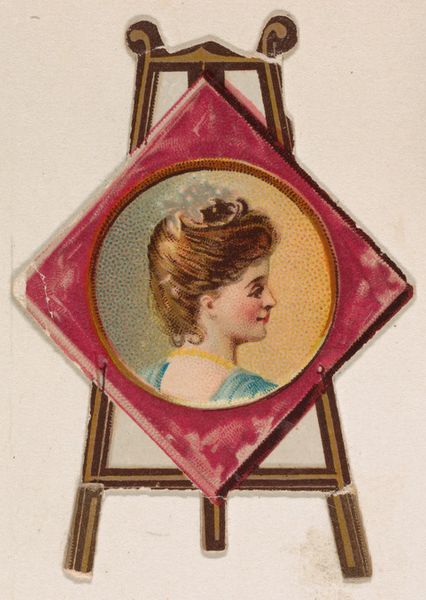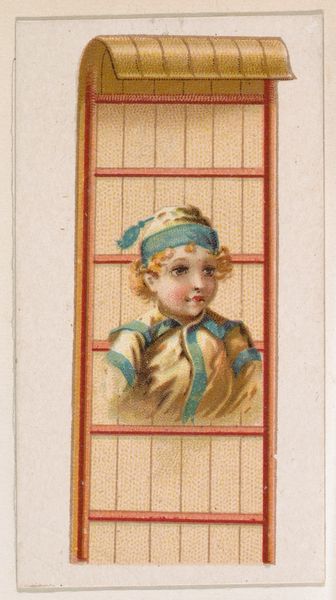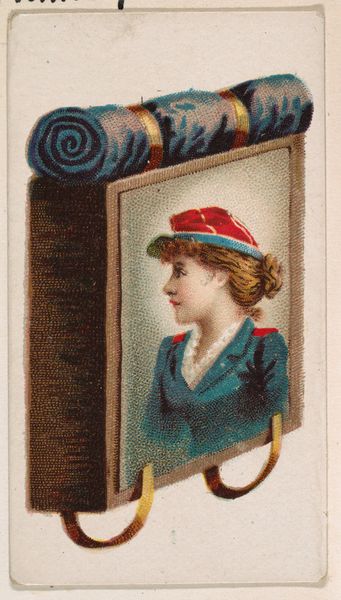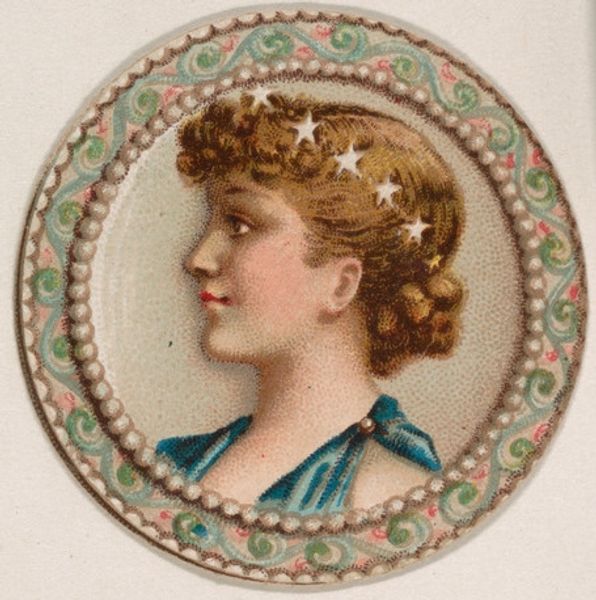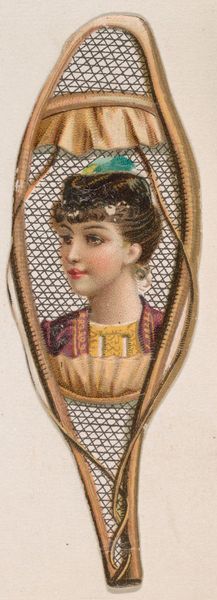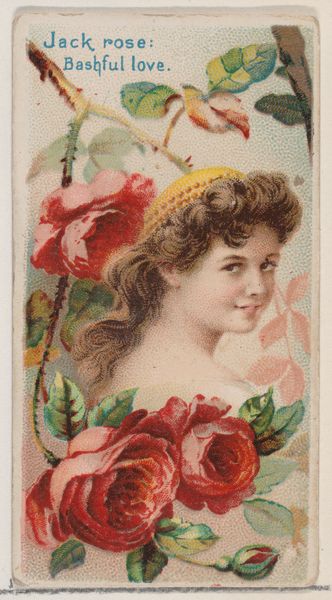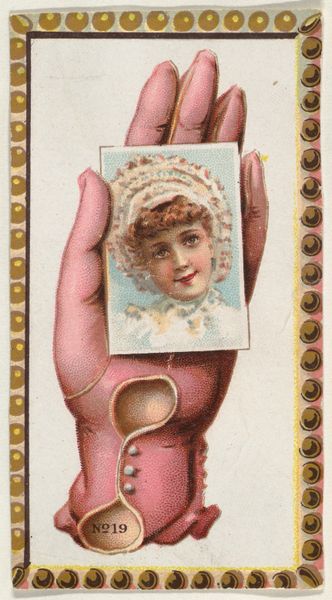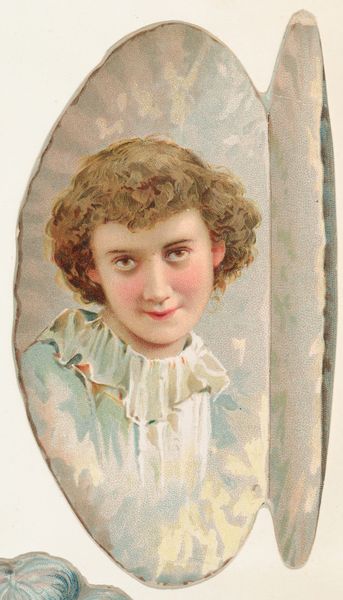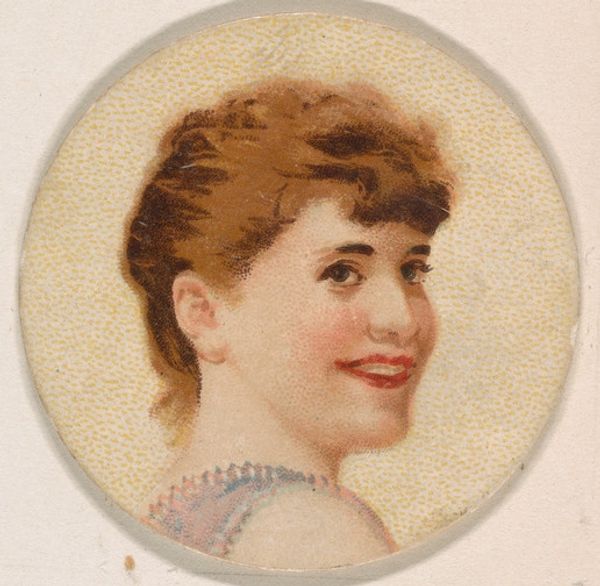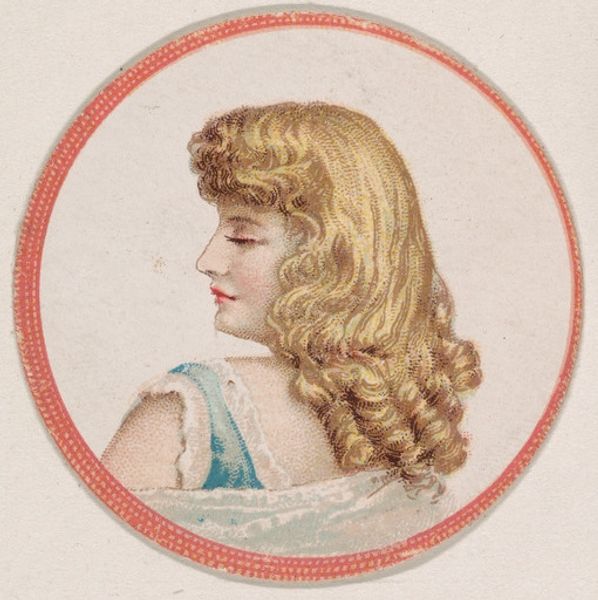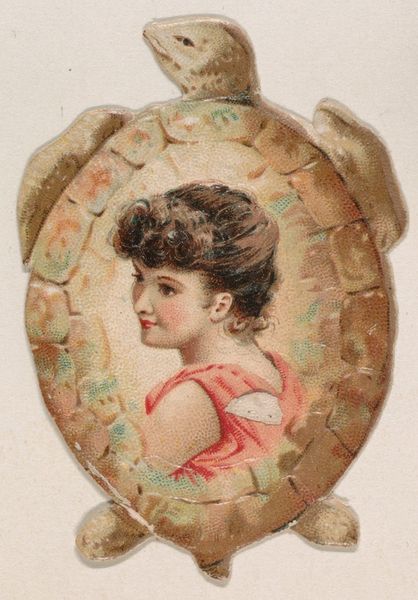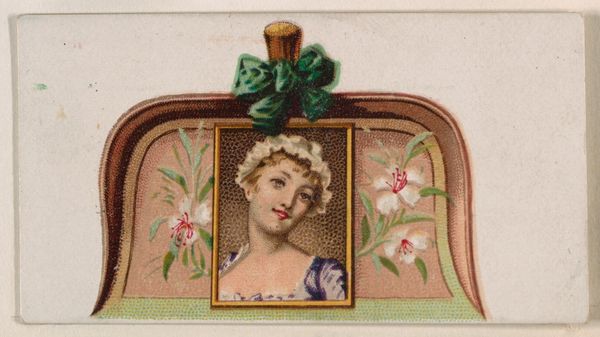
Billfold, from the Novelties series (N228, Type 3) issued by Kinney Bros. 1889
0:00
0:00
drawing, print, paper
#
portrait
#
drawing
# print
#
figuration
#
paper
#
framed image
#
academic-art
#
portrait art
#
watercolor
Dimensions: Sheet (Round): 1 9/16 × 1 9/16 in. (4 × 4 cm)
Copyright: Public Domain
Editor: Here we have “Billfold, from the Novelties series (N228, Type 3)” made in 1889 by Kinney Brothers Tobacco Company. It’s a drawing or print on paper depicting a woman inside of what looks like a billfold or wallet. What catches your eye about this object? Curator: What interests me most is understanding this piece in the context of mass production and consumption. It is an advertising card distributed by a tobacco company. Let’s consider the materials: inexpensive paper, likely mass-produced printing techniques. It makes me think about the labor involved in its production, both in the tobacco fields and in the printing factories. Editor: That’s an interesting angle! I was focused on the portrait itself and the academic style, but you are thinking more broadly about the social system of production. Do you think this emphasis changes how we think about the subject matter? Curator: Absolutely. The image itself becomes secondary to its function as a commodity, a tool to drive consumption of tobacco products. Who was the target audience? How did the aesthetic values of the time, evident in the “academic art” style, contribute to the allure of the product? These are vital questions. Editor: It seems the artist used watercolors. Curator: Let's not forget the watercolor medium is itself part of this economic network, impacting what an art form signifies. This "novelty" was disposable, meant to be collected but ultimately discarded as new series were released. The ephemeral nature of these cards mirrors the transient nature of consumer culture. Editor: It’s fascinating to consider art and labor in that way, which shifts my focus to think about who created the actual billfold which appears printed on the card? Curator: Exactly! By examining the material processes involved in creating this card, we challenge traditional hierarchies and find connections between high art and everyday objects. Editor: Thinking about the piece like that makes me appreciate that the artwork offers an interesting look into consumerism and advertising from that time! Curator: And it compels us to ask more profound questions about the relationship between art, industry, and society.
Comments
No comments
Be the first to comment and join the conversation on the ultimate creative platform.
